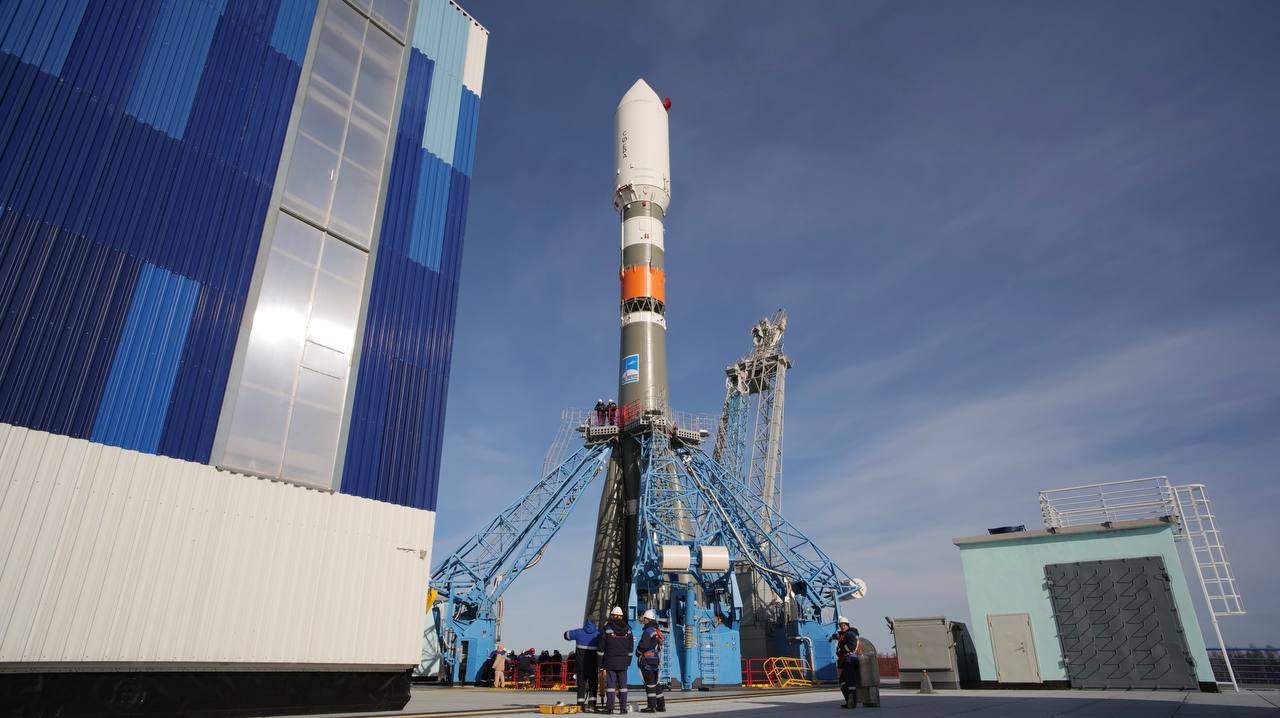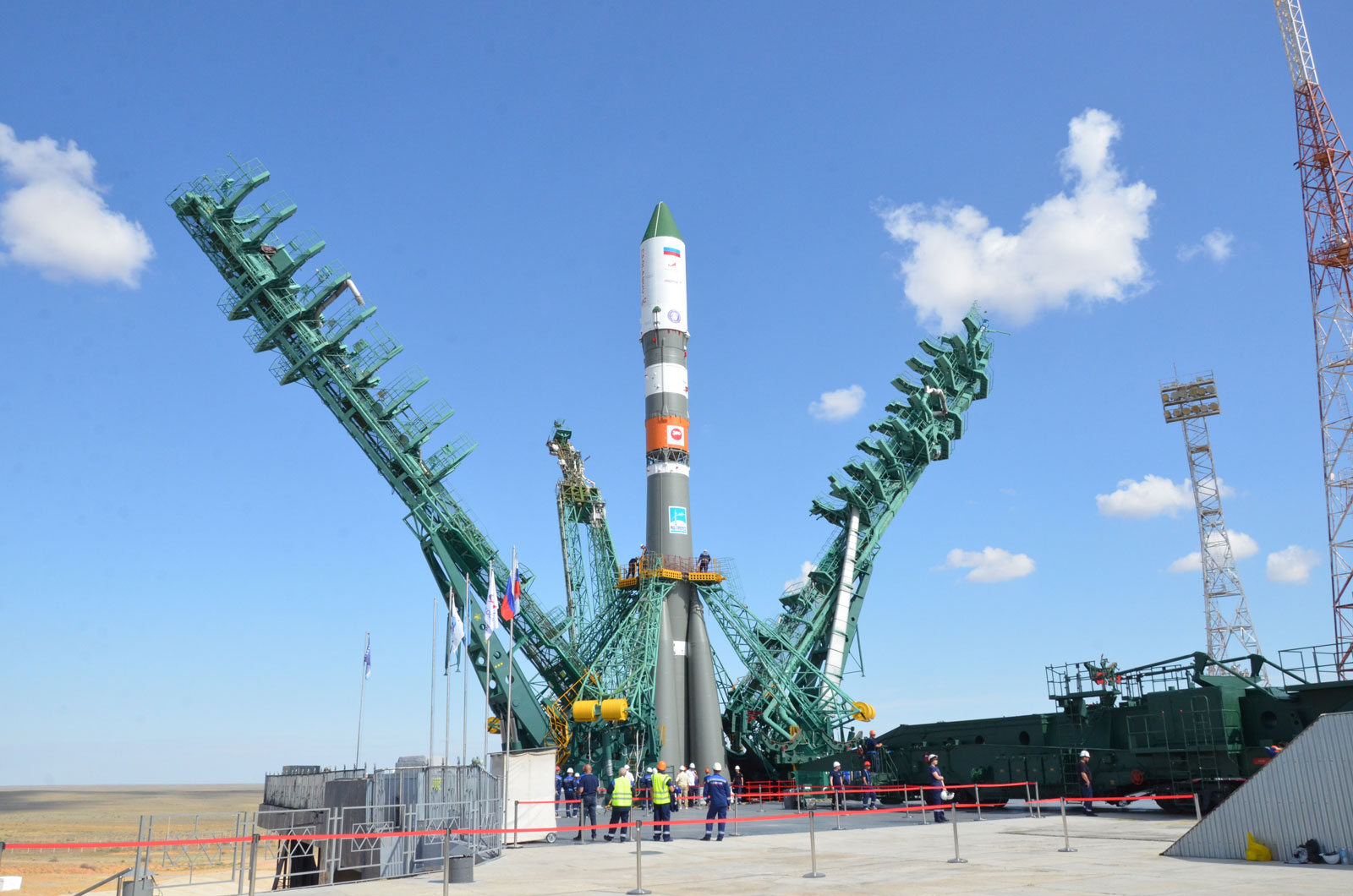Upcoming Spaceflight Launches
Filter by Agency, Locations or Vehicles
Show All LaunchesSoyuz 2.1b/Fregat-M | AIST-2T 01 & 02
Progress Rocket Space Center | RussiaVostochny Cosmodrome, Siberia, Russian Federation
Dec. 28, 2025, 1:18 p.m.
Status: Go for Launch
Mission:
A pair of Russian optical Earth observation satellites built by the Progress Rocket Space Centre for obtaining stereo images of the Earth's surface, with maximum resolution of 1.2 m in panchromatic mode and a swath width of 32 km. 50 small satellites will also be launched as ride-share payloads, including 3 from Iran.
Sun-Synchronous OrbitSoyuz 2.1a | Progress MS-33 (94P)
Progress Rocket Space Center | RussiaBaikonur Cosmodrome, Republic of Kazakhstan
March 22, 2026
Soyuz-5 | Demo Flight
RKK Energiya | RussiaBaikonur Cosmodrome, Republic of Kazakhstan
TBD March, 2026
Soyuz 2.1a | Progress MS-34 (95P)
Progress Rocket Space Center | RussiaBaikonur Cosmodrome, Republic of Kazakhstan
April 25, 2026
Soyuz 2.1a | Progress MS-35 (96P)
Progress Rocket Space Center | RussiaBaikonur Cosmodrome, Republic of Kazakhstan
June 17, 2026
Soyuz 2.1a | Soyuz MS-29
Progress Rocket Space Center | RussiaBaikonur Cosmodrome, Republic of Kazakhstan
July 14, 2026
Status: To Be Confirmed
Mission:
Soyuz MS-29 will carry three cosmonauts and one astronaut to the International Space Station aboard the Soyuz spacecraft from the Baikonur Cosmodrome in Kazakhstan. The crew consists of Roscosmos cosmonauts Pyotr Dubrov and Anna Kikina, as well as NASA astronaut Anil Menon.
Low Earth OrbitSoyuz 2.1b/Fregat | Glonass-K1 No. 19
Progress Rocket Space Center | RussiaPlesetsk Cosmodrome, Russian Federation
TBD December, 2026
Status: To Be Determined
Mission:
Glonass-K are the third generation of satellite design for GLONASS satellite navigation system. GLONASS is a Russian space-based navigation system comparable to the similar GPS and Galileo systems. This generation improves on accuracy, power consumption and design life. Each satellite is unpressurized and weighs 935 kg, and has an operational lifetime of 10 years.
Medium Earth OrbitSoyuz 2.1b/Fregat-M | Luna 26
Progress Rocket Space Center | RussiaVostochny Cosmodrome, Siberia, Russian Federation
TBD December, 2027
Status: To Be Determined
Mission:
Luna 26 (also named Luna-Resurs) is a planned lunar polar orbiter, part of the Luna-Glob program, by the Russian space agency Roscosmos. In addition to its scientific role, the Luna 26 orbiter would also function as a telecommunication relay between Earth and Russian landed assets. The scientific payload on board the orbiter is composed of fourteen instruments that will be fabricated by Russia. The payload will study the lunar surface and the environment around the Moon, including the solar wind, and high-energy cosmic rays. Luna 26 will also scout sites for the planned Luna 27 landing mission. Luna 26 is the second mission of Russia's new lunar program, which includes the launch of Luna 27, a heavy lander that will study the composition of the lunar soil by collecting several samples. Luna 28, a lunar samples return mission, will be the first to return samples at lunar temperature, and will serve as a demonstration for a future Martian samples return mission. Finally, Luna 29 should land a heavy lunar rover on the surface.
Lunar OrbitSoyuz 2.1b/Fregat-M | Luna 27
Progress Rocket Space Center | RussiaVostochny Cosmodrome, Siberia, Russian Federation
TBD December, 2028
Status: To Be Determined
Mission:
Luna 27 (also named Luna-Resurs 1) is a planned lunar lander mission by Roscosmos to send a lander to the South Pole–Aitken basin, an area on the far side of the Moon. The purpose is to prospect for minerals, volatiles (nitrogen, water, carbon dioxide, ammonia, hydrogen, methane and sulfur dioxide, and lunar water ice in permanently shadowed areas of the Moon and investigate the potential use of these natural lunar resources. On the long term, Russia considers building a crewed base on the Moon's far side that would bring scientific and commercial benefits. The lander will feature 15 science instruments that will analyse the regolith, plasma in the exosphere, dust, and seismic activity. The payload will include a sampling drill.
Lunar OrbitSoyuz 2.1a
Obzor-R No.1
43/4 (43R) - Plesetsk Cosmodrome, Russian FederationNote: Assignment of payloads to this launch is uncertain. The Russian Obzor-R satellite is a planned X-band radar earth observation satellite desi…
LVM-3 (GSLV Mk III)
BlueBird Block 2 #1
Satish Dhawan Space Centre Second Launch Pad - Satish Dhawan Space Centre, IndiaAST SpaceMobile’s Block 2 BlueBird satellites are designed to deliver up to 10 times the bandwidth capacity of the BlueBird Block 1 satellites, requi…
Long March 12A
Demo Flight
Long March 12A Pad - Jiuquan Satellite Launch Center, People's Republic of ChinaFirst test launch of CASC/SAST’s Long March 12A rocket, with a dummy payload. The rocket’s 1st stage attempted to land on a landing pad about 300 km …
HANBIT-Nano
Spaceward
HANBIT Pad - Alcântara Space Center, Federative Republic of BrazilMaiden orbital launch attempt for the South Korean start-up Innospace and its HANBIT-Nano small launch vehicle. Onboard this flight are five small sa…
H3-22
Michibiki 5 (QZS-5)
Yoshinobu Launch Complex LP-2 - Tanegashima Space Center, JapanQZSS (Quasi Zenith Satellite System) is a Japanese satellite navigation system operating from inclined, elliptical geosynchronous orbits to achieve o…
Electron
The Wisdom God Guides (iQPS Launch 6)
Rocket Lab Launch Complex 1B - Rocket Lab Launch Complex 1, Mahia Peninsula, New ZealandSynthetic aperture radar Earth observation satellite for Japanese Earth imaging company iQPS.
New Shepard
NS-37
West Texas Suborbital Launch Site/ Corn Ranch - Corn Ranch, Van Horn, TX, USANS-37 is the 16th crewed flight for the New Shepard program and the 37th in the New Shepard program's history.
Long March 5
TJSW-23
101 - Wenchang Space Launch Site, People's Republic of ChinaChinese classified satellite claimed to be for communication technology test purposes. Actual mission not known.
Electron
Don't Be Such A Square (STP-S30)
Rocket Lab Launch Complex 2 (Launch Area 0 C) - Wallops Flight Facility, Virginia, USASTP-S30 is a complex mission that will deliver research experiments and technology demonstrations to orbit for the DoD and contribute to future space…
Falcon 9
Starlink Group 15-13
Space Launch Complex 4E - Vandenberg SFB, CA, USAA batch of 27 satellites for the Starlink mega-constellation - SpaceX's project for space-based Internet communication system.




